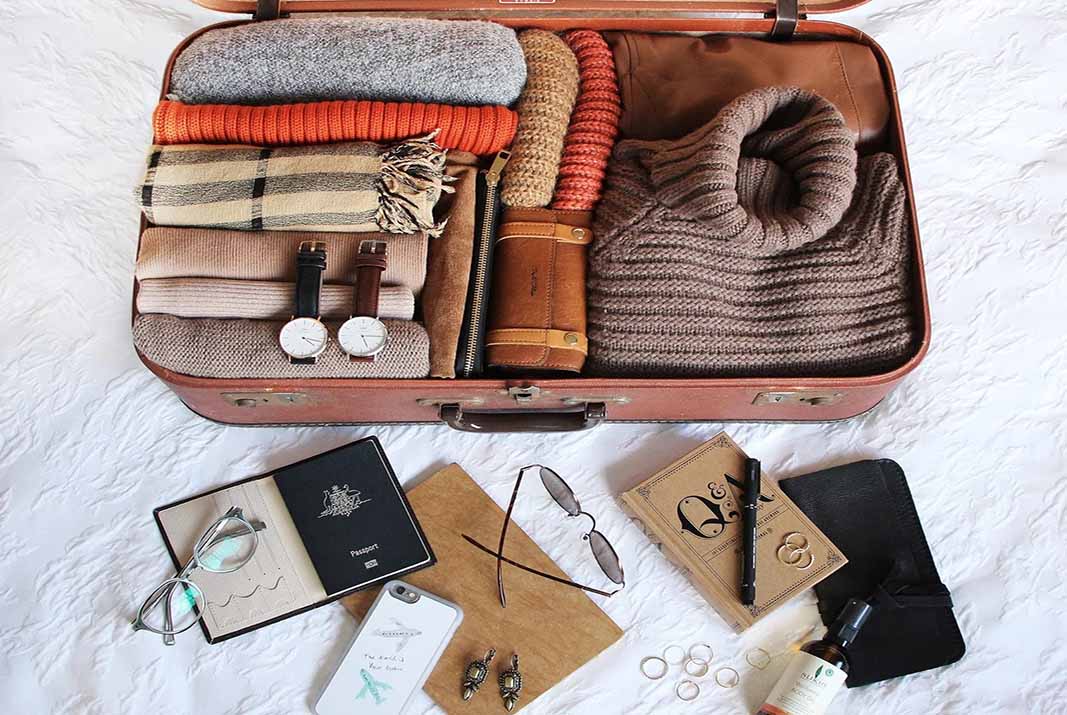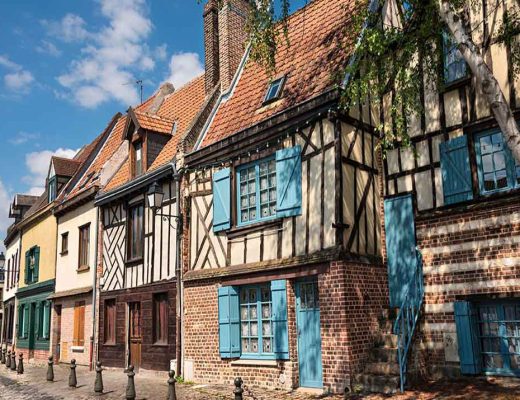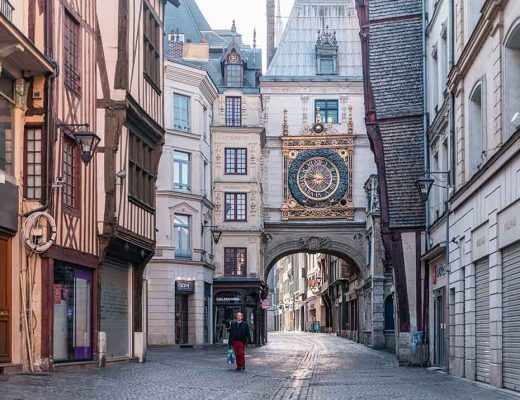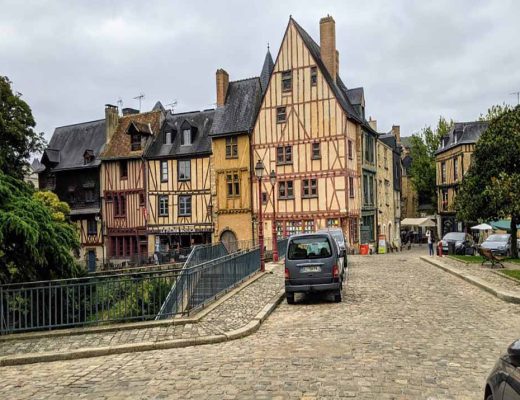Every time I pack for a trip to Le Havre, especially in December, I feel that mixture of anticipation and mild panic. I want to be prepared for every situation — the damp sea air, the chill of Normandy’s winter winds, the unexpected dinner invitation, and the long hours spent on trains or planes getting there. And yet, I also dread hauling a giant suitcase over cobblestones or lifting it into overhead racks.
On my first trip to Le Havre, I overpacked. I brought heavy coats, multiple pairs of boots, and half my wardrobe “just in case.” By the second day, I regretted it all. I learned that Le Havre, like much of France, rewards travelers who can move freely and adapt. A lightweight packing strategy became my salvation. Over the years, I’ve refined my list and my approach. What follows are my most trusted tips, drawn from personal experience, mistakes made, and lessons learned.
Understanding Le Havre’s December Climate
The key to packing smart begins with understanding the weather. December in Le Havre is damp, breezy, and rarely freezing but always chilly. Temperatures hover around 5–10°C (41–50°F), but the wind from the English Channel can make it feel colder. Rain is frequent, sometimes a drizzle, sometimes a downpour.
I’ve walked the promenade along the beach in early December with rain misting my glasses and the waves roaring against the pebbles. Without a proper waterproof layer, it’s miserable. With the right clothing, though, the sea feels alive and invigorating. That’s why my first rule is to pack for wet, windy, and variable weather — and to do it without weighing myself down.
Rule One: Layers Over Bulk
When I used to pack a heavy parka, I thought I was being practical. I imagined myself wrapped in warmth, ready for the chill of December winds along the Normandy coast. The reality was far less comfortable: I ended up sweating indoors, peeling off layers in overheated cafés, only to feel the cold cut straight through once I stepped back outside. A single bulky coat simply couldn’t handle the changing environments of Le Havre — damp streets, warm museums, breezy promenades, and chilly train platforms.
What works far better is layering, a system I learned after one particularly uncomfortable winter trip. By combining thin but versatile pieces, I can adjust quickly to whatever the day brings. Indoors at the André Malraux Museum of Modern Art (MuMa), where the light-filled galleries can be warmer than expected, I shed a layer easily. Walking along the promenade by the sea, where the wind feels sharp and salty, I put everything back on and feel fully protected.
- Base Layer: A thin merino wool or thermal shirt. These are breathable, warm, and light, making them the foundation of every winter trip I take. Merino wool in particular doesn’t trap odors, so I can wear the same shirt multiple days without feeling less than fresh.
- Middle Layer: A fleece or lightweight sweater. This is the cozy part of the outfit, something that feels soft against the skin but packs down tightly into a suitcase. I prefer a neutral color so it pairs with anything else I bring.
- Outer Layer: A waterproof, windproof shell. This is the non-negotiable piece for Le Havre in December. My current favorite folds into its own pocket, taking up almost no space in my bag. It shields me from sudden showers on the beach and the stiff winds that sweep across the open plazas.
This system keeps me warm, dries quickly if I get wet, and is easy to adjust indoors. It also saves luggage space compared to bulky coats, leaving more room for essentials or even a few souvenirs from Normandy’s charming shops.

Shoes: Two Pairs Only
Footwear is where I once went completely wrong. On my first winter trip to Normandy, I brought three pairs of boots, convinced I would need options for every possible scenario. In the end, I wore one pair constantly and cursed the weight of the others as I dragged my suitcase up the steps at Le Havre station.
Now I swear by just two pairs, and it’s been a game-changer for traveling light.
- Waterproof walking shoes or boots — breathable, comfortable, and designed with soles that grip wet cobblestones. These are indispensable when exploring Le Havre’s streets after rain or wandering along the rocky beach. I once walked from the city center all the way to the harbor on a damp December morning, and these shoes kept me steady and dry the whole way.
- Smart casual shoes — lightweight loafers or ankle boots that work for dinners, museums, or a casual night at a wine bar. They pack easily, weigh little, and instantly dress up an outfit. I’ve worn mine to a dinner overlooking the port, where I felt appropriately put-together without sacrificing comfort.
This minimalist approach covers every scenario I’ve faced in Le Havre, from climbing the soaring steps of St. Joseph’s Church to enjoying mussels and cider in a brasserie near the waterfront. More importantly, it keeps my luggage light and my movements free, allowing me to focus on the experience rather than the weight of unnecessary shoes.
Choosing the Right Bag
A lightweight packing plan only works if the bag itself isn’t a burden. After years of trial and error, I’ve settled on a carry-on-sized rolling suitcase and a foldable backpack.
- The rolling suitcase makes train transfers from Paris (whether from Charles de Gaulle or Orly) much easier.
- The foldable backpack slips inside my luggage but expands when I want to take day trips, like to Étretat’s cliffs or Honfleur’s harbor.
Platforms like Samsonite, Eastpak, and Osprey all make reliable lightweight bags. I usually check discounts on Amazon France before ordering gear.
Toiletries and Health Essentials
French pharmacies are excellent, but I always bring my basics to avoid emergency shopping:
- A travel-sized moisturizer — the sea wind dries skin fast.
- Lip balm — absolutely essential in December.
- Compact umbrella — collapsible, sturdy, and always in my backpack.
- Any personal medication, clearly labeled.
By limiting toiletries to essentials and buying the rest locally if needed, I save space for more meaningful items.
The Art of the Capsule Wardrobe
One of my biggest breakthroughs was embracing the capsule wardrobe concept. I pack clothes that all mix and match:
- 2 pairs of trousers (one casual, one slightly dressier).
- 1 versatile dress or skirt (for dinners or concerts).
- 3–4 tops that layer well.
- 1 scarf, which doubles as warmth and style.
Suddenly, ten possible outfits emerge from just a few pieces. It feels liberating to stop worrying about “what to wear” and focus on experiencing Le Havre.
Electronics Without Overload
I used to carry heavy cameras, multiple chargers, and even a travel iron. Now I’m ruthless:
- Smartphone with good camera (perfect for capturing the sea at sunset).
- Compact power bank.
- Universal adapter.
- E-reader instead of heavy books.
Le Havre’s modernist architecture, like Auguste Perret’s designs, is striking enough that I sometimes regret not having a DSLR. But for lightweight travel, my phone does the job.
Snacks and Comforts for the Journey
The trip to Le Havre often involves long flights, trains, and layovers. I always pack:
- A reusable water bottle.
- A small bag of nuts or dried fruit.
- A lightweight travel pillow.
It makes the hours from airport lounges to the Paris–Le Havre train ride far more bearable.
Booking Platforms I Rely On
To make lightweight travel smoother, I also choose smart booking platforms:
- For flights, I check Skyscanner and Google Flights, then usually book directly on Air France or KLM.
- For hotels in Le Havre, I use Booking.com for its flexible cancellation and sometimes Expedia for package deals.
- For restaurants and experiences, TheFork (LaFourchette) is excellent in France — I’ve booked waterfront dinners this way.
- For museum and attraction tickets, I use GetYourGuide or Tiqets, which save me the hassle of queuing.
These platforms not only simplify logistics but also allow me to keep documents digital, reducing the need for printed confirmations and clutter.

Packing Rituals Before Departure
On the night before I leave, I always do the same ritual: I lay everything on the bed, then cut it by a third. That “just in case sweater”? Gone. The second scarf? Left behind. Every single trip confirms that lighter is better.
Once, on a December morning, I arrived at Le Havre station carrying only my suitcase and a small backpack. I felt free. As I walked toward the waterfront, the winter wind on my face, I realized I had everything I needed and nothing more. That sense of lightness carried into the trip itself, making me more present, more mobile, and more open to spontaneous discoveries.
Advice for First-Time Visitors
If you’re planning your first December trip to Le Havre, here are my parting pieces of advice:
- Don’t fear the weather — embrace it. Pack light layers, a waterproof jacket, and enjoy the drama of the winter sea.
- Choose shoes wisely — comfort and waterproofing matter more than style.
- Keep your luggage lean — you’ll thank yourself when transferring from Paris to Le Havre by train.
- Trust booking platforms — they streamline your journey and help you focus on the experience, not logistics.
Above all, pack for freedom, not for fear. Le Havre is a city best explored lightly — walking its beach, admiring its modernist skyline, and watching the tides shift without being weighed down by too much baggage.



